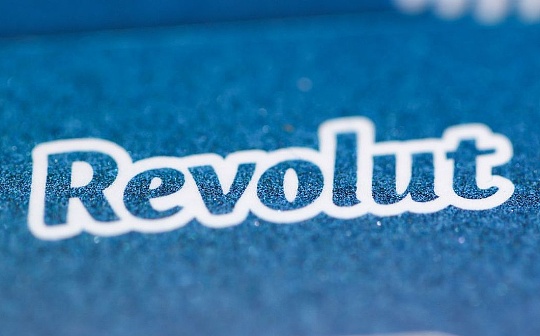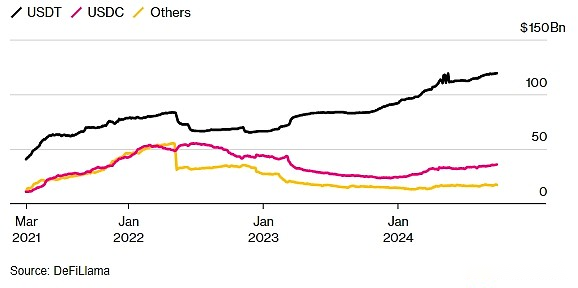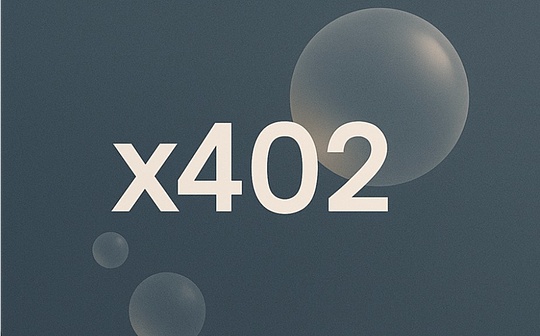
Author: Olga Kharif, Emily Nicolle, Paige Smith, Bloomberg; Compilation: Five Bah
From Robinhood Markets Inc. to Revolut LTD. and other companies are considering launching stablecoins. They believe that more stringent supervision in Europe and other regions will eventually weaken Tether Holdings LTD. to control the rapid expansion of the rapidly expanding digital asset field.
People familiar with the matter said,Robinhood and Revolut are the two most valuable fintech companies. They are trying to issue their own stablecoins, but these companies may still choose not to continue.They demand anonymous discussion of confidential information.
Over the years,The nobles have always tried to compete with Tether’s USDT, but most of them have no results.The circulation of stablecoin (a tokens that aim to maintain constant value) has expanded to nearly 120 billion US dollars, accounting for more than two -thirds of the market.According to the data of Coingecko, the market value of the second -ranked USDC is $ 36 billion, and the market value of other stable coins is much smaller.
Tether’s USDT dominates the stable currency market

However, as the European Union is ready to adopt extensive cryptocurrency rules at the end of this year, the uncertainty faced by Tether has intensified.According to MICA regulations, the cryptocurrency exchanges operated by the European Union may be forced to remove the stable coins of issuers such as Tether and other issuers who have not obtained appropriate permission.
USDC’s issuer Circle Internet Financial LTD. has obtained the required EU license.The company said in January that it had secretly applied for the first public offering in the United States.
Tether CEO Paolo Ardoino has repeatedly worried that if the stable currency issuance is large -scale redemption, the EU rules will bring too much risk.Ardoino stated in an email statement that the company has no electronic currency license in the European Union and is developing a “technical solution” to serve the EU market.
A spokesman for Robinhood said the company “has no plan to launch the product recently.”A spokesman for Revolut said the company plans to “further develop” its encrypted product kit, but does not confirm the future stablecoin.
Profit reserve
Financial motivation is huge.According to Tether’s data, as USDT circulation value and interest rates rose simultaneously, Tether’s profits mainly came from supporting its reserves, reaching $ 5.2 billion in the first half of 2024.The company said that as of the end of the period, the number of employees was about 100.
Thomas Eichenberger, chief product officer of Sygnum, said in an interview: “Many companies have paid attention to companies such as Circle and Tether, as well as the data they published.” “This sounds like a great business model. Many people may mayWant to copy it “
There are also early signs that stable currency (so far is mainly used to transfer funds into and out of the cryptocurrency exchanges) is increasingly widely used for payment.For example, Russian companies use USDT to pay import fees to bypass the banking system affected by sanctions.
According to a survey by Castle Island Ventures, Brevan Howard Digital, and Artemis this month, nearly half of cryptocurrency users are purchasing stable currencies in emerging markets such as Brazil, Indonesia, Turkey, India, and Nigeria.Nearly 40% of people use stable currency to pay goods or services, while more than one -fifth of people receive or pay wages by tokens.
Everyone wants to join
As more and more publishers enter the market, the result may be “highly fragmented by stablecoin”,Nuri Chang, the person in charge of Bitgo product, said the company announced its launch of its own tokens in September.He said that different financial applications may run their own stable currency, and the exchange between tokens will become so seamless, so that end users will not even notice it.
“Mainstream retail brands, new banks and exchanges will consider issuing stable currency. The same is true for credit card companies,” said Christian Catalini, the founder of the Massachusetts Institute of Technology’s encrypted economy laboratory.”People gradually realize that Tether and Circle has a huge influence in this market.”
Over the years, USDT has performed tough in front of various challengers.PayPal Holdings Inc. launched a stablecoin last year to try to consolidate its dominant position in the field of digital payment.COINGECKO data shows that the circulation of the token reached a peak of $ 1 billion in August, but it has fallen by about 30%since then.
According to the first stage of MICA, the rules of the EU managed stablecoin have taken effect at the end of June.They demanded that stable currency issuers have electronic currency licenses in EU member states, and hold two -thirds of tokens to support assets and other standards at independent banks.
All other encrypted platforms (from exchanges to fund) supervision and implementation periods for the longest period of 18 months will begin at the end of 2024.This method of implementation in two stages allows the formation of compliance gray areas. The stable currency rules are effective, but the exchange does not necessarily delete non -compliant tokens before obtaining its own MICA license.
Exchanges including OKX, UPHOLD and Bitstamp have been removed from Tether before the coming deadline.Chris Harmse, the chief business officer of the encrypted payment business BVNK, said that these platforms are now in a “competitive disadvantage”, and the company intends to keep Tether on its EU platform until the regulatory situation becomes clearer.
SG-FORGE, a subsidiary of French Industrial Bank, is one of the companies that see business opportunities.The company said in July that it had obtained electronic currency licenses and expanded its stable coins to the retail market.
“We think the stablecoin market -must be in Europe, but it may also be reshaped around the world -will be reshaped by MICA,” Stenger said.”Now the requirements for clean products are very high.”








